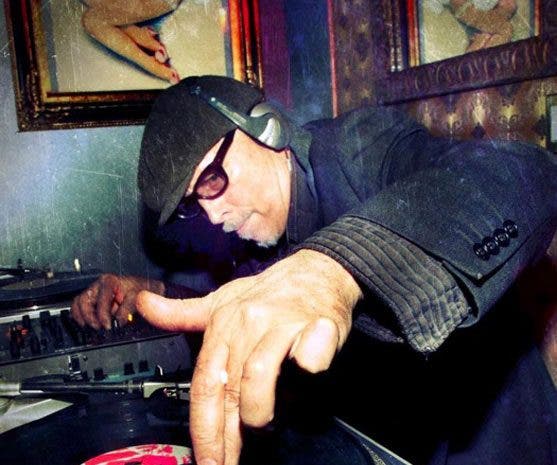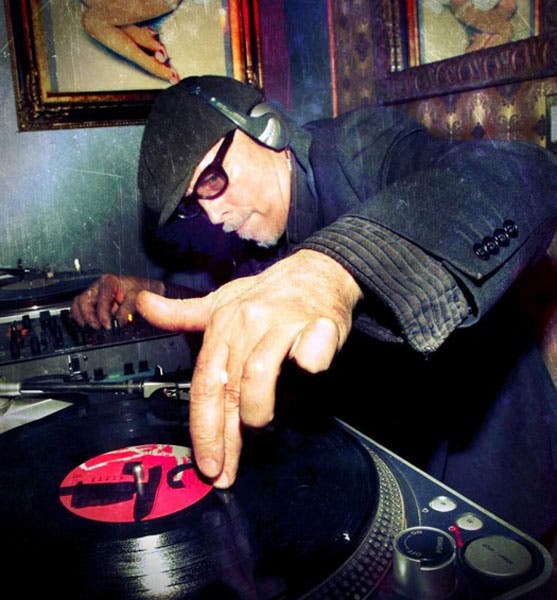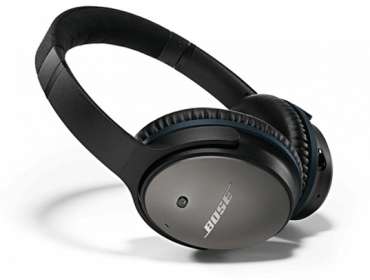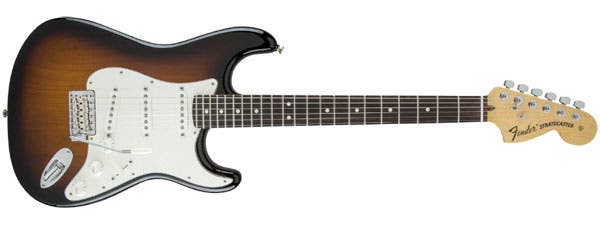Lots of people fantasize about being a DJ in the club. It is wild to imagine being in control of all the gyrating bodies on the dance floor. Every new track you play results in an eruption of cheers. What a cathartic experience it must be to use your musical taste to create the vibe for a packed room. Being a DJ used to mean that you needed to bring massive trunks full of vinyl records. With the emergence of CDs and MP3’s it became a lot easier to consolidate your favorite tracks into a couple of CD books. Now, DJ technology is more intuitive than ever. Some DJ’s use nothing more than a laptop and an interface, while some keep it old school with vinyl. In this article, we will discuss some of the more popular DJ set ups from fully computerized to totally analog. You can choose what path to take as you embark on your DJ journey.

The basic concept of DJing is simple. You want to be able to constantly play dance music without any stops or awkward transitions as you change songs. As you grow, you can start to mash-up different tracks, scratch, play with effects, and even produce your own music. In order to DJ you need a source to play your tracks (computer, CDJ, turntable) and a way to mix and crossfade (mixer, controller, laptop).
There are many ways to build your DJ set up. We’ll begin with the most basic computer-based options and expand to the more modular and analog options. These are the set-ups we will cover:
- All Computer Rig
- Computer with DJ Controller Rig
- CDJ with Computer Rig
- Turntable and Computer Rig
- CDJ Rig
- Turntable Rig

All Computer Rig
The simplest DJ set up utilizes a laptop with software and an audio interface. There are many options on the market for DJ software. Some of the leading programs include Traktor, Serato, and Ableton. Serato and Traktor are more intuitive for a DJ who wants to spin their favorite tracks. There are hardware options that are designed to communicate directly with the software. Ableton is a good option for the DJ who wants to produce their own music as well as integrate pre-existing tracks. While you can run most of these programs on any kind of laptop, I would recommend getting a dedicated Apple laptop. Some hardware and software are optimized for Mac, and you might run into some problems down the line with a PC. The entry level MacBook Pro ($1,299) is more than adequate to run a DJ rig. If you are planning to be a serious DJ, it is a good idea to keep this laptop dedicated for music production and use a different device for your day-to-day computing. Having a good amount of RAM is key for audio work. You can always run an external hard drive if you’re tight on space.
Other than a computer, you will need an audio interface. This piece of hardware converts the digital signals from your computer into high-quality audio signals that can be sent through a sound system. Thinking ahead when you purchase your interface will also allow you to use it to connect peripheral devices such as CDJs, mixers, turntables, microphones, and more. Here are some options for audio interfaces:

This interface offers stereo RCA inputs, three sets of stereo outputs, a dedicated headphone output, and a built-in USB hub. Utilizing Focusrite sound quality, the Audiohub delivers 96 kHz / 24 bit audio. The device has easy-to-use onboard mix controls as well as input selector.

Native Instruments Traktor Scratch A10 ($499)
This interface is for the Traktor user who wants to grow their rig over time. This device allows you to connect up to four control decks (vinyl/CD) for real-time manipulation. In addition to being a high-quality audio interface, the device is jam-packed with special features and controls to enhance your DJ performance.

Apogee Duet ()
The Duet has two input channels, two output channels, and a headphone output. Apogee delivers some of the highest quality preamps and audio conversion on the market. This device is incredibly versatile, portable, and durable. It can be used for live DJ performance as well as project studio recording.

Computer with DJ Controller Rig
As you grow and explore the world of DJing, you may find it hard to express yourself with a mouse or trackpad. It is difficult to make smooth crossfades by clicking and dragging. By adding a DJ controller to your set-up, you can use physical faders, knobs, and buttons to control your DJ set. These devices connect to your laptop via USB and can be mapped to control many different functions. Some controllers are designed to interface with specific software. To help simplify your rig, some controllers have built in audio interfaces. Here are some DJ controller options:

Pioneer DDJ-WEGO3 ($299)
This compact controller is compatible with most software and can even connect directly to an iPad or iPhone for the ultimate mobile rig. The control surface features two large jog wheels, mixer controls, crossfade, and other effects. The WEGO3 also has a built-in audio interface for high-quality sound output.

Reloop Terminal Mix 8 ($699)
This controller is designed to work intimately with the included Serato DJ software. The interface is laid out intuitively and has touch sensitive pads that can trigger cue points, loops, samples, and more. Built-in iZotope-powered effects can be controlled with rotary knobs. A robust four-channel mixer is sandwiched by two high-quality jog wheels. This device features a built-in audio interface with ample inputs and outputs.

The XDJ-R1 all-in-one controller allows you to break free from the computer all together. This device features dual CD players as well as a USB port to play audio content. The XDJ-R1 can be wirelessly controlled via an iOS device, even when Wi-Fi isn’t available. Bridging the world between CDJ and digital controllers, the XDJ offers high-quality audio inputs/outputs, mixer controls, and jog wheels.

CDJ with Computer Rig
A CDJ is short for CD DJ turntable. These devices are designed to emulate the control of a vinyl turntable, which is why we see jog wheel platters on most control devices. Because CDs contain digital files, these devices are able to offer DJs much more control, expression, and precision than a vinyl turntable. DJ software can integrate this tactile control by using what they call “control CDs”. These CDs do not contain audio files but rather have marker information. Control CDs allow the DJ to use the CDJ to manipulate tracks that are being read by the computer software. Of course, CDJs can also be used to play audio CDs. The CDJ rig requires two CDJ turntables as well as a mixer. Some DJs add more CDJs, but two are needed to crossfade and transition between songs. The CDJ setup is the preferred rig of many professional DJs. While it is not a cheap option, it allows for maximum digital control.

The CDJ 900NXS features a large full-color LCD screen, Wi-Fi, and USB connectivity. This device will read audio from CD, USB, or iPod dock. This CDJ features a large jog wheel as well as many built-in effects and tools.

Pioneer CDJ-2000NXS ($1,997)
This CDJ is the industry standard for professional DJs worldwide. In addition to CDs, this CDJ can play audio from computers, SD cards, and USB. The CDJ-2000NXS features a 6.1” full-color screen, large jog wheel, and intuitive controls. Controls on the surface of the player can be mapped to trigger other devices via HID and/or MIDI. This CDJ also comes jam packed with proprietary effects and DJ tools.
DJ Mixers
In addition to the two CDJs, you will have to add a DJ mixer to your rig. This mixer allows you to crossfade between songs, adjust volume, adjust EQ, as well as other parameters. The controls of the mixer might look familiar as they are emulated in most of the DJ controllers mentioned above. The most basic mixers have two channels that allow you to mix between two different sound sources. More advanced mixers have more channels that allow you to add multiple sources. Some mixers have a built in audio interface so that you do not need an additional one to connect to your computer. Here are some DJ mixer options:

The DDM4000 is a feature-packed 4-channel digital mixer. This device is both a digital controller that can be mapped to your software as well as an outboard mixer. The DDM4000 has two microphone inputs and 4 phono/line inputs.

The Xone: 43 is a 4+1 channel DJ mixer that offers the very best in analog audio quality, including the legendary Xone filter with resonance control, 3 band EQ, and a crossfader with three curve settings. While this device doesn’t have midi-mapping capabilities, it focuses on the highest quality analog audio mixing and can really bring a polished professional sound to your DJ set.

Rane Sixty-Four Mixer ($2,199)
This top of the line four-channel mixer seamlessly integrates with Serato. The Rane has a built-in audio interface for high-quality sound conversion. The interface allows for advanced midi mapping and audio routing. The Rane comes equipped with powerful EQs, filters, and effects to enhance your DJ performance.

Turntable with Computer Rig
Turntables were used by the first DJs to spin their music. Now, turntables have made a comeback. Thanks to control vinyl, which functions like the control CDs mentioned above, DJs can use analog turntables to scratch, cue, and manipulate digital songs. Control vinyl do not have any audio information on them, but instead have special marking code that allows the turntable to communicate with the software. Of course, you can use your turntable to spin real vinyl records and develop old school DJ techniques. In this rig, you will need two turntables, a DJ mixer, a laptop, and an audio interface (some mixers have built-in interfaces). Here are some turntable options:

Audio-Technica AT-LP120 ($297.95)
This professional turntable features a rugged cast aluminum construction with line and phono outputs. A USB output will interface with computers to allow DJs to digitize their collection. Additional features include multiple speeds, pitch control, and reverse mode.

TEAC TN-300 ($399.99)
TEAC delivers Hi-Fi sound with this belt-driven analog record player. The turntable contains a MM phono equalizer amplifier with USB output. While it has minimal controls, the TEAC features high-quality construction and reliability. On the cosmetic side, this turntable is offered in five different colors to help you customize your DJ set up.

Stanton STR8-150HP ($579)
This turntable is designed to have everything professional DJs need. Featuring a high-torque straight arm, Stanton delivers an essentially “skip-proof” playback. The Stanton comes with key correction, reverse playback, up to 50% pitch adjustment, and start/brake speed adjustment. The turntable has selectable phono or line output as well as a digital [S/PDIF] output.


CDJ Rig or Turntable Rig
Just subtract the computer from the rigs above and you can DJ like they did in the times before the internet. Most professional DJs have cut their teeth on CDJ or turntable rigs without the assistance of a computer. There are certain skills and techniques that can only be developed in an analog DJ situation. Computer software does a lot of the work for you. It is important to learn how to crossfade, beat match, and cue in the analog world so that you can really take advantage of the digital tools that are out there. In order to build these rigs you will need two turntables or two CDJs as well as a DJ mixer. You will also need to build your physical music collection. You can only spin tracks that you have on vinyl or CD, so start combing garage sales and record stores for hidden gems. With the right arsenal of jams at your disposal and some practice, you can keep the dance floor bumping all night without a computer or iPhone.






